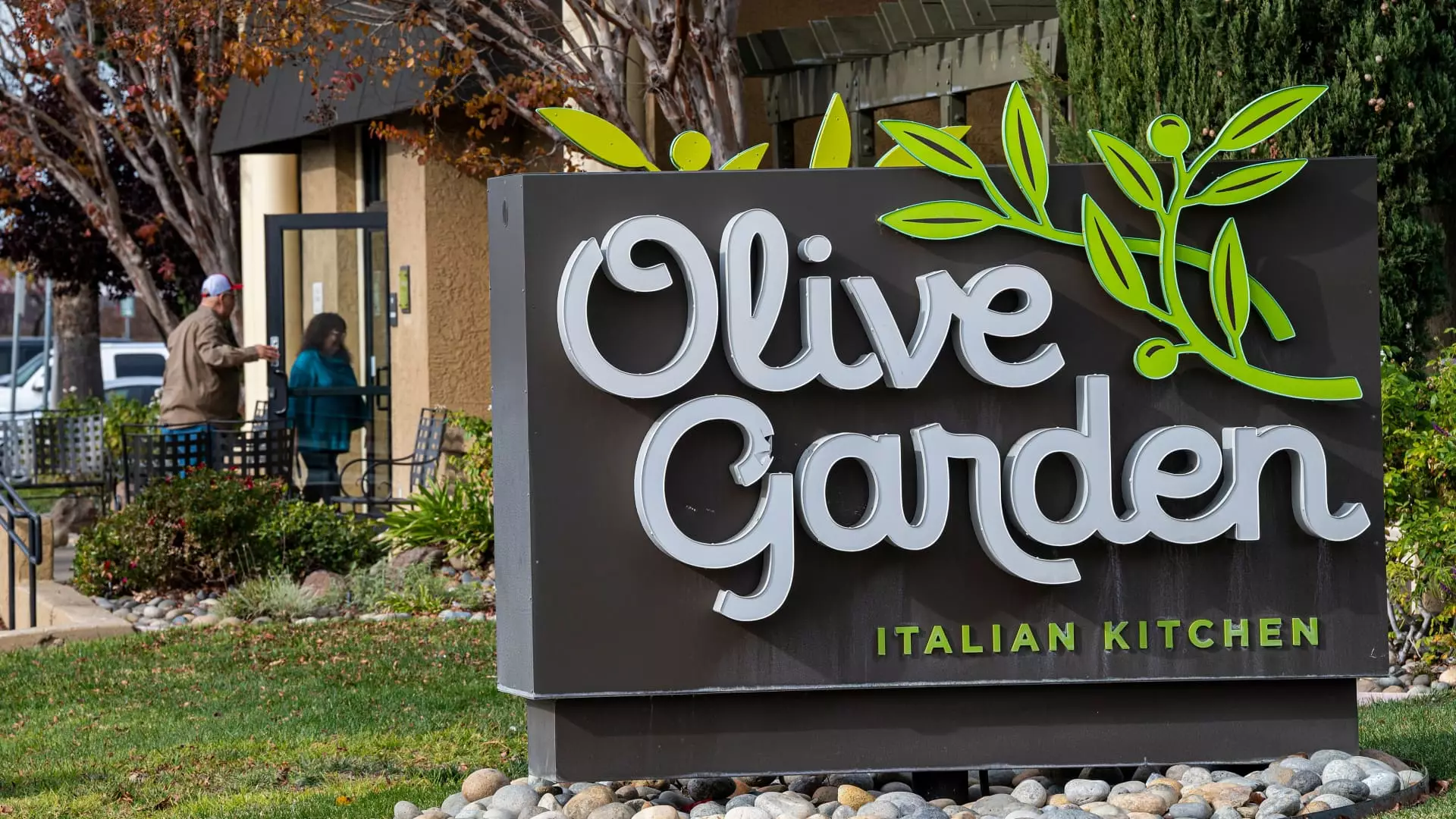Darden Restaurants recently made headlines by exceeding Wall Street’s expectations for both earnings and revenues, a remarkable feat given the current economic climate. For many, this might evoke cautious optimism, yet, in the midst of a slowing consumer spending scenario, such results beg deeper examination. The company reported fourth-quarter earnings per share of $2.98—just a hair above the expected $2.97—alongside net sales of $3.27 billion compared to the forecasted $3.26 billion. However, we must delve into what these numbers mean for Darden, and what they imply for the larger dining landscape.
For fiscal 2026, Darden projects revenue growth of 7-8%. These impressive figures stem partly from the acquisition of 103 Chuy’s restaurants and the strategically planned opening of 25 new locations. This speaks volumes about Darden’s aggressive expansion strategy, even as other players in the dining industry are paring back their growth forecasts. Are these bold moves sustainable, or do they hint at an overreach in a tightening market?
Consumer Preferences Shifting Toward Casual Dining
What stands out in Darden’s performance is the shifting consumer preference towards casual dining experiences. CEO Rick Cardenas has identified a notable trend where consumers are willing to forgo cheaper fast-food alternatives for a more satisfying dining experience. “Our consumers want to go out and spend their hard-earned money,” exclaimed Cardenas, who perceives his brand as a benefactor in the ongoing dining battle against fast food. This notion reflects not just confidence but also a keen understanding of consumer behavior amid economic fluctuations.
The data supports this confidence: Olive Garden achieved a staggering 6.9% growth in same-store sales, outpacing analyst expectations. LongHorn Steakhouse also shone with a 6.7% increase, deviating favorably from projections of 5.3%. But while these figures appear triumphant, they should be scrutinized within the context of the entire dining sector, which is showing signs of a more pronounced pullback in discretionary spending.
Challenges in Fine Dining and Strategic Realignments
Despite the sparkling metrics for casual dining, it’s crucial not to overlook the pitfalls. Darden’s fine dining segment, including brands like Ruth’s Chris Steak House, reported a concerning 3.3% decline in same-store sales, worse than the 0.2% downturn analysts had foreseen. This decline raises questions about the long-term viability of high-end dining establishments in today’s economy, where luxury meals become increasingly viewed as non-essential expenses.
As Darden pivots toward its strengths, the less performing segments, specifically Bahama Breeze, are being scrutinized for potential divestiture. Cardenas indicated that the Bahama Breeze brand isn’t a priority going forward, hinting at a strategic shift that could allow the company to focus resources on more successful ventures. This reveals a critical aspect of business agility in the current climate—knowing when to let go.
Innovative Approaches to Enhance Customer Experience
Darden is not merely resting on its laurels and basking in the glory of financial success; innovation is another cornerstone of its strategy. The return of Olive Garden’s “Buy One Take One” deal has reinvigorated customer interest and aided in driving sales. The rollout of on-demand delivery through Cheddar’s Scratch Kitchen, facilitated by a partnership with Uber Direct, exemplifies a forward-thinking approach to meet changing consumer demands and the growing preference for convenience.
With delivery now available in nearly all Cheddar’s locations, Darden is making strides to secure its foothold in an increasingly competitive landscape. However, such initiatives must be carefully managed to ensure profitability. The partnership with Uber Direct could prove to be either a boon or a bane, depending on how well it resonates with their target market.
What Lies Ahead for Darden Restaurants?
As Darden forecasts continued growth and affirms its $1 billion share repurchase plan, investors should remain alert to the evolving dining landscape. The strategic moves to optimize brand performance, coupled with consumer behavior shifts, will define Darden’s trajectory. Yet, amid this backdrop of growth, a shadow looms: economic uncertainties could complicate the optimistic projections. Cardenas might be confident now, but sustainability in growth will demand agility and perhaps, even more, innovation moving forward.
While Darden has effectively wielded its strengths to navigate the current trends, the question remains: can they maintain this momentum amidst a potentially cooling market, as they face both heightened competition and shifting consumer preferences? The next chapter for Darden Restaurants will be closely watched as they strike a balance between growth and prudent risk management.

